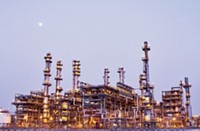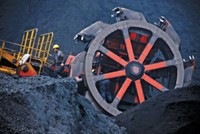Advertisement
Grab your lab coat. Let's get started
Welcome!
Welcome!
Create an account below to get 6 C&EN articles per month, receive newsletters and more - all free.
It seems this is your first time logging in online. Please enter the following information to continue.
As an ACS member you automatically get access to this site. All we need is few more details to create your reading experience.
Not you? Sign in with a different account.
Not you? Sign in with a different account.
ERROR 1
ERROR 1
ERROR 2
ERROR 2
ERROR 2
ERROR 2
ERROR 2
Password and Confirm password must match.
If you have an ACS member number, please enter it here so we can link this account to your membership. (optional)
ERROR 2
ACS values your privacy. By submitting your information, you are gaining access to C&EN and subscribing to our weekly newsletter. We use the information you provide to make your reading experience better, and we will never sell your data to third party members.
Business
China: New Report Describes Continued Petrochemical Expansion
by Jean-François Tremblay
April 11, 2011
| A version of this story appeared in
Volume 89, Issue 15

At a late-March press conference in Hong Kong, executives from Sinopec, China’s top refiner and petrochemical producer, noted that their firm boosted ethylene output by 35% in 2010 to more than 9 million metric tons. By 2015, Sinopec expects it will produce as much as 13.5 million metric tons of ethylene annually, nearly twice as much as Japan produced prior to the recent earthquake.
These numbers underline the expansion in China’s petrochemical industry. In a new report, the consulting firm Mitsubishi Chemical Techno-Research provides the details behind this fantastic growth. Tokyo-based Techno-Research says it took the firm’s team seven years to research this statistics-rich third edition of “Petrochemical Industry in China.”
In the six years ending in 2010, China boosted its annual ethylene capacity by 40% to 16.8 million metric tons, the report says. Much of the expansion took place inland at less well-known sites such as PetroChina’s Duzhanzi and Lanzhou plants in the northwest and Sinopec’s Wuhan facility in the center of the country.
And the growth of China’s petrochemical industry is showing no sign of slowing down. By 2015, the country’s total ethylene capacity likely will exceed 26 million metric tons, making it possibly the world’s second-largest producer. The U.S., the world’s top ethylene maker, had 28.7 million metric tons of capacity in 2009, according to Techno-Research.
Remarkably, despite all the growth in capacity, China remains far from able to fill its own petrochemical needs. In 2015, the country will import about as much polyethylene and ethylene glycol as it did in 2008, Techno-Research predicts. In 2008, China imported 5.2 million metric tons of ethylene glycol, or just about twice as much as it could make at the time, the consultants note.
China’s domestic petrochemical industry faces some serious handicaps, the consultants warn. Labor productivity in China is a mere one-eighth of the world’s average. Plant maintenance turnarounds take twice as long as elsewhere. And plant energy consumption is 27% higher. “Overall technology is approximately 10 years behind advanced countries,” the consultants write, adding that the government is adopting measures to address these lapses.
Despite China’s technological weakness, foreign companies are not likely to reprise their role as joint-venture partners in the country’s future petrochemical complexes. Four large complexes now operating in China are co-owned by a local partner and Shell, BP, BASF, and ExxonMobil and Saudi Aramco. In the past, “China had to rely on foreign companies, but now China has become able to design, purchase, and build the plants by itself,” the report says.
Nonetheless, foreign companies will still enjoy vast opportunities in China. Foreign firms will obviously play an important role in satisfying China’s insatiable demand for petrochemical products. In addition, “many foreign petrochemical companies will promote their specialty chemical business with high-added-value rather than commodity chemicals,” Techno-Research notes.




Join the conversation
Contact the reporter
Submit a Letter to the Editor for publication
Engage with us on Twitter